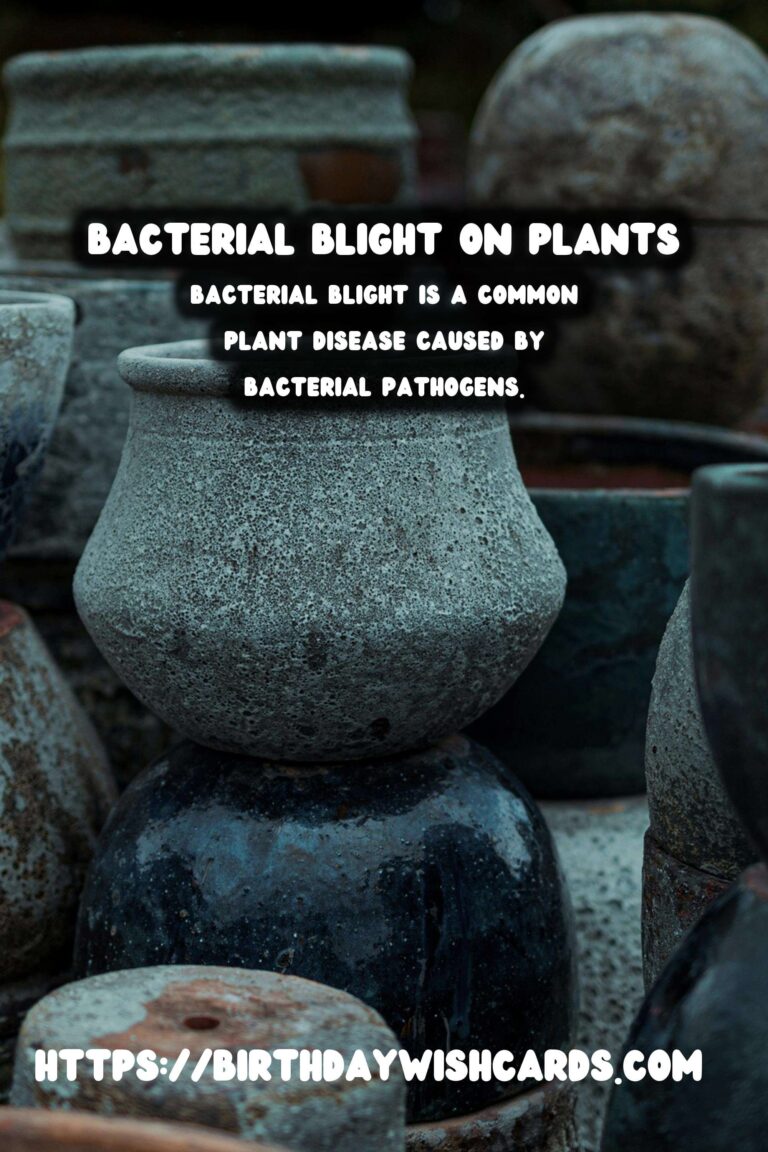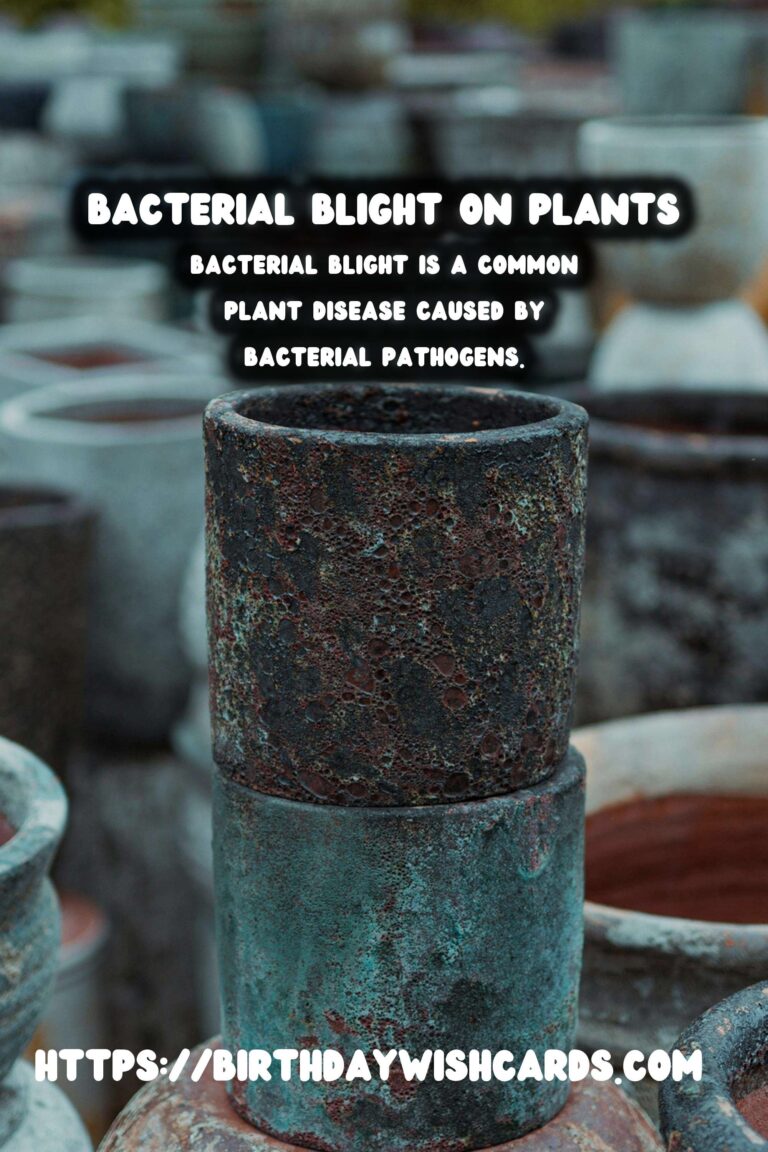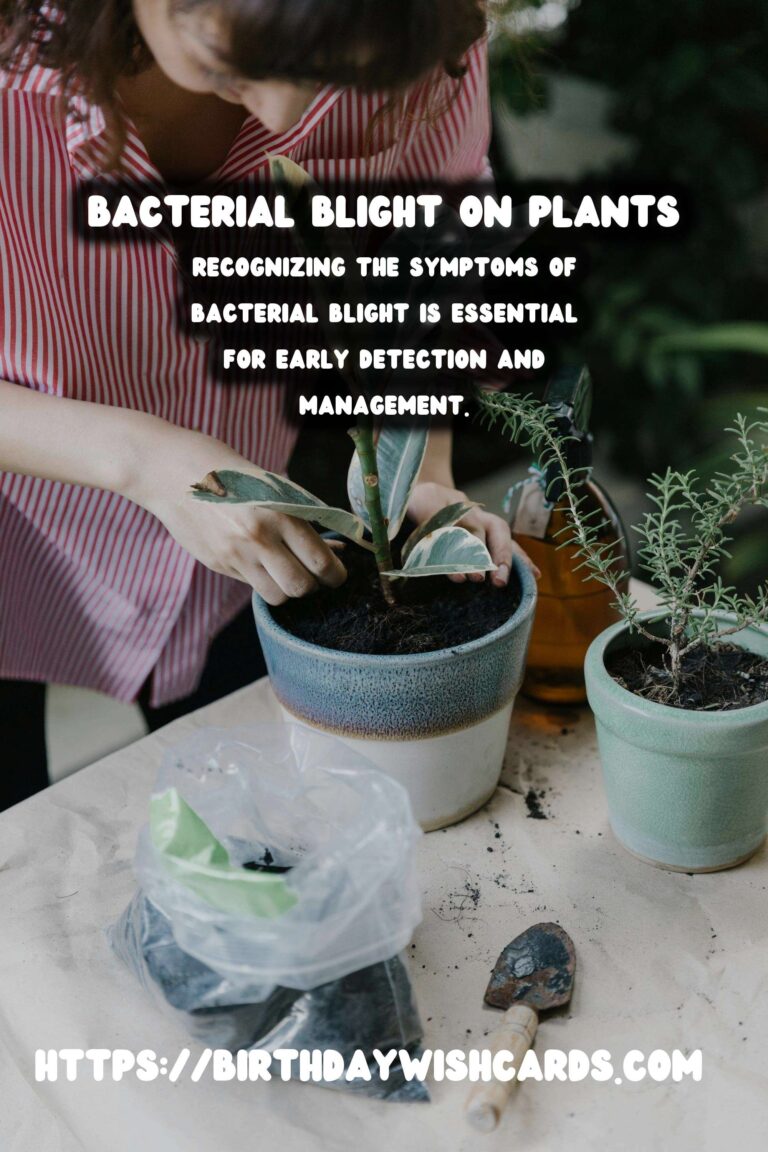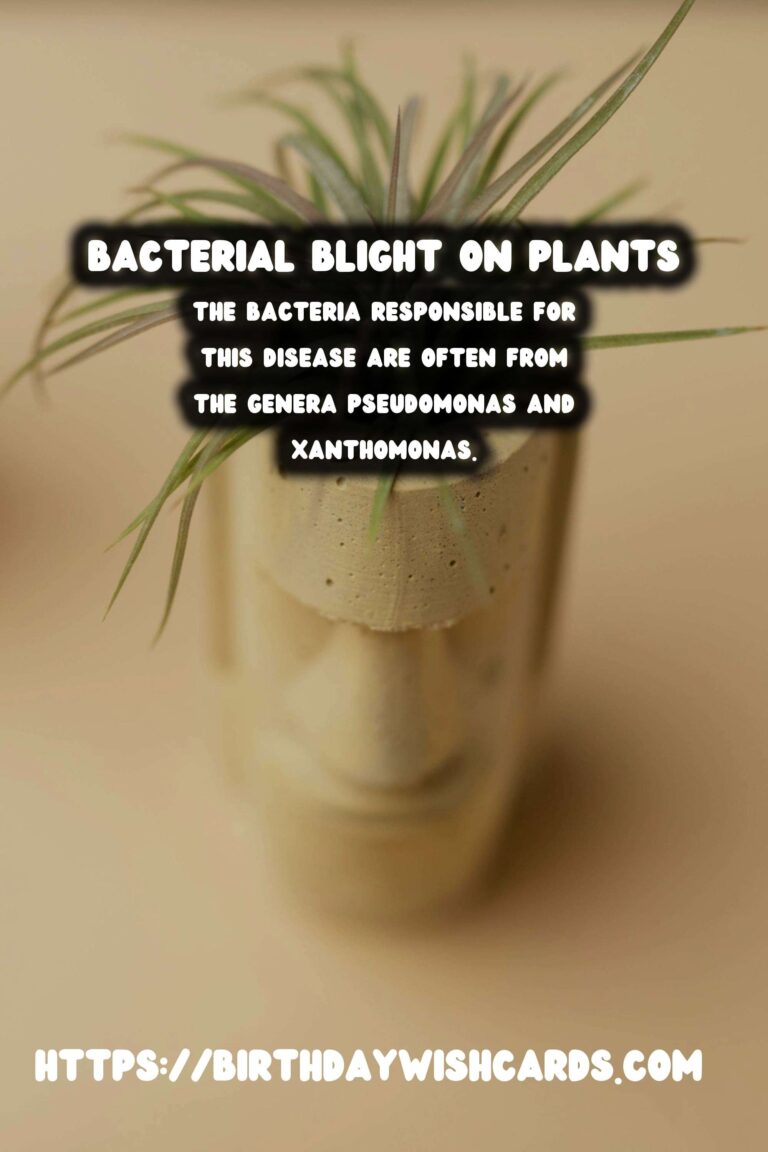
Plants, much like humans, are susceptible to a variety of diseases that can hinder their growth and reduce their productivity. Among these diseases, bacterial blight stands out as a particularly devastating ailment affecting various plant species worldwide. Understanding the nature of bacterial blight, its causes, effects, and management strategies is crucial for gardeners, farmers, and agricultural professionals alike.
What is Bacterial Blight?
Bacterial blight is a common plant disease caused by bacterial pathogens that infect plants, leading to the appearance of blight symptoms such as leaf spots, wilting, and in severe cases, plant death. The bacteria responsible for this disease are often from the genera Pseudomonas and Xanthomonas, which thrive in warm and humid conditions.
Causes of Bacterial Blight
The primary cause of bacterial blight is the infection of plants by specific bacteria. These bacteria can be spread through various means, including water splashes, wind, insects, and human activities such as pruning or harvesting. Inadequate sanitation and plant stress due to environmental factors can also increase susceptibility to bacterial blight.
Symptoms of Bacterial Blight
Recognizing the symptoms of bacterial blight is essential for early detection and management. Common symptoms include:
- Water-soaked spots on leaves that eventually turn brown or black.
- Wilting of leaves and stems.
- Necrotic areas on plant tissues.
- Yellowing of leaves, often leading to premature leaf drop.
Impact on Plants
Bacterial blight can significantly impact plant health and yield. The disease can reduce photosynthesis due to damaged leaves, weaken plant structures, and in severe cases, lead to complete crop failure. This impact is particularly concerning for staple crops like rice, beans, and soybeans, where bacterial blight can cause substantial economic losses.
Management and Control Strategies
Effective management of bacterial blight involves a combination of cultural practices, chemical treatments, and, where possible, biological controls. Some strategies include:
- Implementing crop rotation to reduce soil-borne pathogens.
- Using resistant plant varieties when available.
- Ensuring proper plant spacing to improve air circulation.
- Applying appropriate bactericides judiciously and as recommended by agricultural experts.
- Practicing good sanitation by removing and destroying infected plant material.
Preventive Measures
Prevention is always better than cure. To prevent bacterial blight, ensure good plant hygiene, avoid overhead watering, and inspect plants regularly for early signs of infection. Using certified disease-free seeds and maintaining optimal growing conditions can also help prevent the onset of this destructive disease.
Conclusion
Understanding bacterial blight is essential for anyone involved in plant cultivation. By recognizing its symptoms early and implementing effective management strategies, the adverse effects of this disease can be minimized. Through vigilant monitoring and preventive measures, the health of plants can be safeguarded, ensuring sustainable agricultural practices and crop productivity.
Bacterial blight is a common plant disease caused by bacterial pathogens. The bacteria responsible for this disease are often from the genera Pseudomonas and Xanthomonas. Recognizing the symptoms of bacterial blight is essential for early detection and management. Bacterial blight can significantly impact plant health and yield. Effective management of bacterial blight involves cultural practices, chemical treatments, and biological controls. 









#PlantDiseases #BacterialBlight #Gardening #Agriculture #PlantHealth




